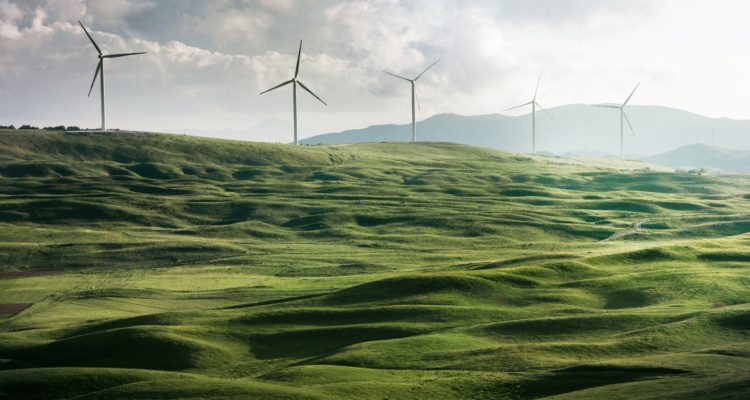

Decarbonization in Composites Manufacturing
For more than a year, ACMA’s Climate Impact Project (CIP) has been helping composites manufacturers prepare estimates of the cradle-to-gate emission of climate warming gases associated with the production of their products. Cradle-to-gate includes the extraction of materials from nature, production and transportation of intermediates, and manufacture of the product for which the climate impacts are estimated.
The CIP recently prepared lifecycle assessments (LCA) for vinyl ester and polyurethane resins, and on the manufacture of products using the pultrusion process. Together with our previously existing information on unsaturated polyester resin and glass fiber, and on products made using the open molding, open mold casting, compression molding and vacuum infusion processes, these data will help both the industry and individual composites manufacturers evaluate composite products’ climate impacts.
Under the CIP we are also developing product category rules (PCR) that will guide the translation of LCA data into the environmental product declarations (EPD) required for infrastructure and construction products.
During the next year, we expect to update our 2012 LCA data for unsaturated polyester resins and glass fiber, and ACMA will launch programs that will help composites manufacturers prepare the LCA and EPDs requested by their customers.
But estimating cradle-to-gate climate impacts is not the last step. Once a company can provide reliable estimates of the environmental impacts associated with the manufacture of its products, customers will start asking for reductions in those impacts.
Ford and other automotive OEMs, for example, have pledged to meet climate goals that will require reductions in supply chain climate impacts. Biden administration policy strongly favors the use of “low carbon” products and materials for federally funded infrastructure projects like highways, GSA-administered buildings, and municipal water and wastewater treatment systems.
Programs recently adopted by the European Union and under consideration by the California legislature will require larger companies to report and reduce climate impacts, including from their supply chains. A principle behind these requirements is that once a company is required to report impacts it will be motivated to reduce them. Small company suppliers to companies required to report under these programs will likely find the regulatory requirements are passed along to them by their large company customers.
How can a composites manufacturer “decarbonize” – that is, reduce its cradle-to-gate climate impacts? ACMA’s industry average LCA for products made using open molding, pultrusion and other processes can be used to identify good starting points.
Figure 1 provides estimates of the relative climate impacts associated with major raw materials and process energy. Not surprisingly, the relative climate impacts of process inputs will vary with different molding processes.
For a manufacturer of open molding products, for example, the emission of climate warming gases associated with the manufacture of resin (including the resin manufacturing supply chain back to extraction of materials from nature) is relatively greater than other process inputs, while for compression molded products the process energy has the largest relative impact.
Making polymers from fossil fuels is associated with the emission of large quantities of climate warming gases, both because of the chemistries involved and the high temperatures required at several steps. Suppliers of resins for composites offer materials made with chemical intermediates derived from recycled packaging or from soybeans or other plants, and these technologies reduce the amount of the intermediates derived from fossil fuel and the climate impacts associated with that process. Use of these resins will reduce the cradle-to-gate climate impacts of making composite products.
Making glass fiber is also energy intensive, and glass fiber can be the primary driver of climate impact for products with high reinforcement loading, such as many pultruded products.
Glass fiber suppliers are working to recover fiber from end-of-life composite products and reinsert this material into the fiber making process, which will provide reductions in the climate impacts associated with glass fiber.
Recycling companies are also working to recover useful material from glass-fiber reinforced plant scrap, and researchers and some composites manufacturers are investigating the use of natural fiber, like that derived from hemp, as reinforcement in composites.
Carbon fiber production is also associated with the emission of significant quantities of climate warming gases. Several recycling companies offer technologies for recovering carbon fiber from end-of-life composite and plant scrap and processing it for use as a replacement for virgin fiber to make new composite products. This practice has the potential for significant reductions in the climate impacts associated with carbon fiber reinforced composites.
When considering the use of recycled material to replace virgin material, the emission of climate warming gases associated with the collection, transportation and processing of scrap or end-of-life material to prepare usable recyclate must be considered. Collection and transportation are major challenges to establishing a reliable supply chain for recycled composite material.
Manufacturers may find that the reduction of climate impacts associated with generation of process energy is an attractive approach to decarbonization, as this will typically not involve process or raw material changes. Many manufacturers buy electricity generated using renewable sources such as wind or solar, although this usually comes at a higher cost. Some companies install solar panels and use the energy generated directly or sell it to their electric utility.
It’s not too soon for composites manufacturers to start planning for decarbonization. Especially critical at early stages will be bringing suppliers and customers into your planning process.
John Schweitzer is vice president of EH&S and sustainability at ACMA. Email comments to jschweitzer@acmanet.org.
Sources of Climate Impacts Associated with Composites Manufacturing Processes

* CO2e, or carbon dioxide equivalent, describes different greenhouse gases in a common unit.
Note: The figures represent averages across several companies that volunteered to provide data and may not be representative of every operation using each of the process types.

SUBSCRIBE TO CM MAGAZINE
Composites Manufacturing Magazine is the official publication of the American Composites Manufacturers Association. Subscribe to get a free annual subscription to Composites Manufacturing Magazine and receive composites industry insights you can’t get anywhere else.



